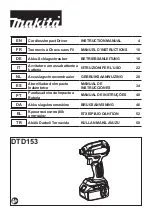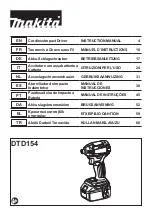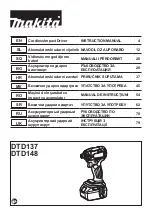
21
a) Do not overload the power tool. Use the correct power tool for the
job.
With the appropriate power tool you will work better and more safely
within the stated performance range.
b) Do not use a power tool if its switch is defective.
A power tool that can
no longer be turned on and off is dangerous and must be repaired.
c) Disconnect the plug from the socket and/or remove a detachable
battery before adjusting the settings, changing insert tool parts or
putting the power tool away.
These safety measures prevent unintended
starting up of the power tool.
d) Keep unused power tools out of the reach of children. Do not allow
anyone to use the power tool who is unfamiliar with it or has not
read these instructions.
Power tools are dangerous if they are used by
inexperienced people.
e) Maintain power tools and insert tools with care. Check whether
moving parts operate properly and do not jam, whether parts are
broken or damaged in such a way that this adversely affects the
working of the power tool. Have damaged parts repaired before
using the power tool.
Many accidents are caused by poorly maintained
power tools.
f) Keep cutting tools sharp and clean.
Carefully looked after cutting tools
with sharp cutting edges stick less frequently and are easier to control.
g) Use power tools, accessories, attachments etc. in accordance with
these instructions. Bear in mind the working conditions and the
work to be carried out.
Using power tools for purposes other than those
for which they are intended can lead to dangerous situations.
h) Keep handles and grip surfaces dry, clean and free of oil and grease.
Slippery handles and gripping surfaces do not allow safe operation and
control of the power tool in unforeseen situations.
a) Only allow qualified specialists to repair your power tool and only
allow them to use original spare parts.
This will ensure that the power
tool remains safe.
Using and
handling
power tools
Service
75544-AZ-Schlagschrauber-GYD-IM-INT-OEF_191105.indd 21
08.11.19 15:08
















































